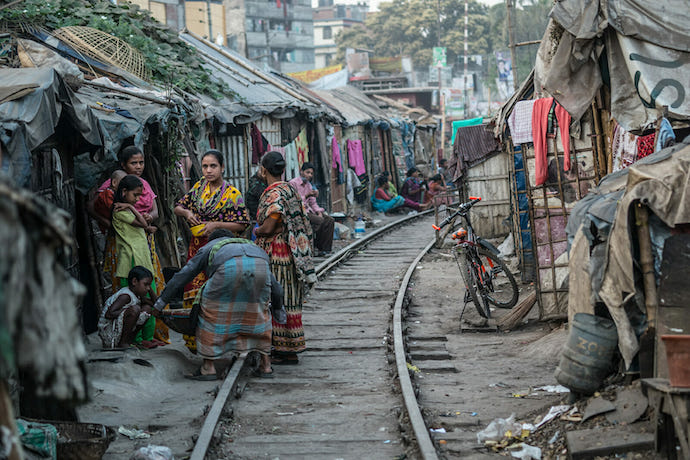The Platform
Latest Articles
by Abdul Mussawer Safi
by Mohammad Ibrahim Fheili
by James Carlini
by Mohammad Ibrahim Fheili
by Abidemi Alade
by Sheiknor Qassim
by Theo Casablanca
by Vince Hooper
by Samita Sajeevan
by Abdul Mussawer Safi
by Mohammad Ibrahim Fheili
by James Carlini
by Mohammad Ibrahim Fheili
by Abidemi Alade
by Sheiknor Qassim
by Theo Casablanca
by Vince Hooper
by Samita Sajeevan
Roadblocks in the Path Toward Sustainable Development
Sustainable development has become the overarching theme of most national or international policy-making processes. The Brundtland Report, published in 1987 by the United Nations World Commission on Environment and Development, coined the term “sustainable development” and defined it as “development that meets the needs of the present without compromising the ability of future generations to meet their own needs.” Although the concept and its importance have been agreed upon for over three decades, there is hardly any convergence on how to achieve sustainable development.
This delay in securing a consensus is leading to a delay in execution, which is causing substantial and sometimes irreparable ecological damage. The pervasiveness and growing traction of the sustainable development discourse has certainly yielded positive results, but the achievements are not enough. According to Nobel Laureate Joseph Stiglitz: “What we measure informs what we do. And if we’re measuring the wrong thing, we’re going to do the wrong thing.”
Gross domestic product is one of the most important indicators of how well an economy is performing. It acts as a standardised measure across nations and it helps policymakers and investors gauge the state of the business cycle in an economy. Although the concept of GDP is useful, it has gained inflated importance in modern discussions of government policy.
GDP falls short when it comes to measuring human welfare, environmental sustainability, or income disparity. For instance, rising crime in a country will enhance GDP as expenditure on surveillance and security measures, painting the wrong picture that the economy is flourishing. Despite these shortcomings, GDP continues to enchant institutions and individuals alike due to its objectivity, which places it at the heart of economic models. Any deviation in a country’s quarterly GDP from the estimates makes international headlines. This incentivises policymakers to prioritise GDP, brushing aside the grim reality beyond the headlines.
 To mitigate the problem of inconsiderate growth, the United Nations adopted the 2030 Agenda for Sustainable Development, with 17 Sustainable Development Goals at its core. These SDGs have played an important role in raising awareness about the climate crisis and driving nations and firms to assess the ecological impact of their decisions. They have, however, fallen short of having a meaningful impact.
To mitigate the problem of inconsiderate growth, the United Nations adopted the 2030 Agenda for Sustainable Development, with 17 Sustainable Development Goals at its core. These SDGs have played an important role in raising awareness about the climate crisis and driving nations and firms to assess the ecological impact of their decisions. They have, however, fallen short of having a meaningful impact.
A study conducted to assess progress toward achieving sustainable development following the SDGs’ adoption revealed dismal findings. The findings suggest a continued existence of trade-offs between socioeconomic and environmental objectives across the EU. Most EU member states have observed socioeconomic improvement with environmental degradation.
Similar studies also reveal that, while there are inter-linkages between the SDGs, the agenda also contains trade-offs. For example, the trade-off between SDG 2 (Zero Hunger) and SDG 15 (Life on Land) creates a land struggle between expanding agricultural areas to eliminate hunger and protecting natural ecosystems and biodiversity. This impedes the goal of achieving the SDGs in conjunction.
Other measures, like the genuine progress indicator, which accounts for externalities such as pollution, have also failed to make a mark. Using the SDG index, which has little grounding in statistical or ecological principles, to measure SDG progress is also highly problematic. The reason for their limited success is that it is challenging to ascribe economic value to environmental threats such as overfishing, oil spills, and deforestation. This subjectivity broadens the scope for political manipulation, deepening the divide between developed and developing nations over climate change. The disagreement over development measures is only a symptom of a bigger ideological disconnect, hampering progress toward climate change mitigation.
Free market environmentalism rejects the sustainable development approach itself. It argues that it is difficult to forecast what future generations’ requirements will be. The resources we conserve now may become obsolete in the future. For example, preserving tungsten earlier to make bulbs would have been counterproductive since energy-efficient and eco-friendly LEDs are now widely used, which do not require tungsten. The argument that the market can efficiently tackle the problem of natural resource allocation has merit. The issues with free market environmentalism are visible when addressing environmental goods like the provision of clean air, as it is difficult to assign property rights in these cases. Market failure to provide clean air has resulted in carbon dioxide concentrations in the atmosphere being 50% higher than in the pre-industrial era, reaching levels not seen for nearly four million years.
 Green economic thought views the economy as a circular flow of both matter and money, as opposed to conventional models, which consider the economy to be a circular flow of only money. The green economic analysis captures the interaction between nature and the economy in a much more substantial manner than any traditional model of analysis has been able to.
Green economic thought views the economy as a circular flow of both matter and money, as opposed to conventional models, which consider the economy to be a circular flow of only money. The green economic analysis captures the interaction between nature and the economy in a much more substantial manner than any traditional model of analysis has been able to.
Yet within its folds, diametrically opposing ideas have emerged, divided on the dynamics between ecological conservation and economic growth. The radicals propose the degrowth model, which holds that the economy cannot continue to grow without harming the environment. However, not only is it possible, it’s already been happening. For the past decade, as many countries have transitioned to green energy, they have successfully seen their emissions shrink while their GDP has grown. The moderates support the idea of sustainable development, which forgoes both the maximum growth favoured by free-market environmentalists and the zero-growth supported by the radical Greens. This is the approach followed by the UN and forms the basis of the SDGs. As previously noted, this method has its dilemmas.
The three approaches aim to ensure the prosperity of the planet and people alike with different, and often opposite paths to achieving prosperity. Despite the diverse viewpoints, they have a common blind spot. With the commotion around intergenerational equity, the discussion on intra-generational equity seems to have taken a back seat. According to World Social Report 2020, income disparity has expanded in several developed and middle-income countries, including China and India. While inter-country inequality has been reducing, it still accounts for two-thirds of global inequality. This income disparity intensifies mass consumerism in advanced economies and mass poverty in backward economies, both of which are hindrances to achieving sustainable development.
While technological innovation is necessary to combat climate change, it is ineffective as long as there is a large disparity in income levels. Innovation aimed at minimising specific resource exploitation frequently causes mere shifting of exploitation to weaker economies. Electric Vehicles Initiative has been one of the flag bearers of the world’s response to climate change. Market innovation with sustained public policies has contributed to the sales of electric cars rising strongly over the years. According to an International Energy Alliance report, EVs have a higher carbon footprint throughout the manufacturing process, needing around six times the minerals required by a conventional vehicle. The increase of EVs would quadruple the demand for these minerals by 2040. This has already started taking a toll on vulnerable communities and endangering their ecosystems.
Focusing on poverty alleviation would be the most promising strategy to mitigate the trade-offs between the SDGs. Reducing extreme poverty (SDG1) will lead to people living healthier lives (SDG 3), contributing to a stronger economy (SDG 8), and raising the means of implementation through tax payments (SDG 17) which will enable public investments in infrastructure (SDG 9), which will facilitate quality education (SDG 4) and other important services like clean water and sanitation (SDG 6). It would also assist in reducing inequalities within and among countries (SDG 10) which is crucial to tackling climate change (SDG 13). To achieve the climate change target, reducing poverty at a global level is a must.
GDP cannot be discarded simply because it does not factor in environmental impact. It needs to be used alongside other indicators to ensure both inter-generational and intra-generational equity are achieved. No matter how carefully designed the indicator is, basing policy decisions on one of them is undesirable and dangerous. Goodhart’s Law acts as a good guide: “When a measure becomes a target, it ceases to be a good measure.”
Ecological, economic, and behavioural sciences must be integrated to develop new and complementary indicators that will provide a more comprehensive view of reality. While markets are essential for accelerating economic growth and reducing poverty, effective public policies at international, national, and local levels, sensitive to socio-economic situations of the region, are required to ensure that the growth is inclusive and ecologically sound.
Udit Rana is a Research Intern at the Centre for Civil Society. He is currently pursuing a Master's degree in Economics from Ambedkar University Delhi. Before this, he completed his graduation in Economics from Indraprastha University. He has earlier worked with Ladli Foundation Trust and has a keen interest in welfare economics, ecological and economic sustainability, and public policy.